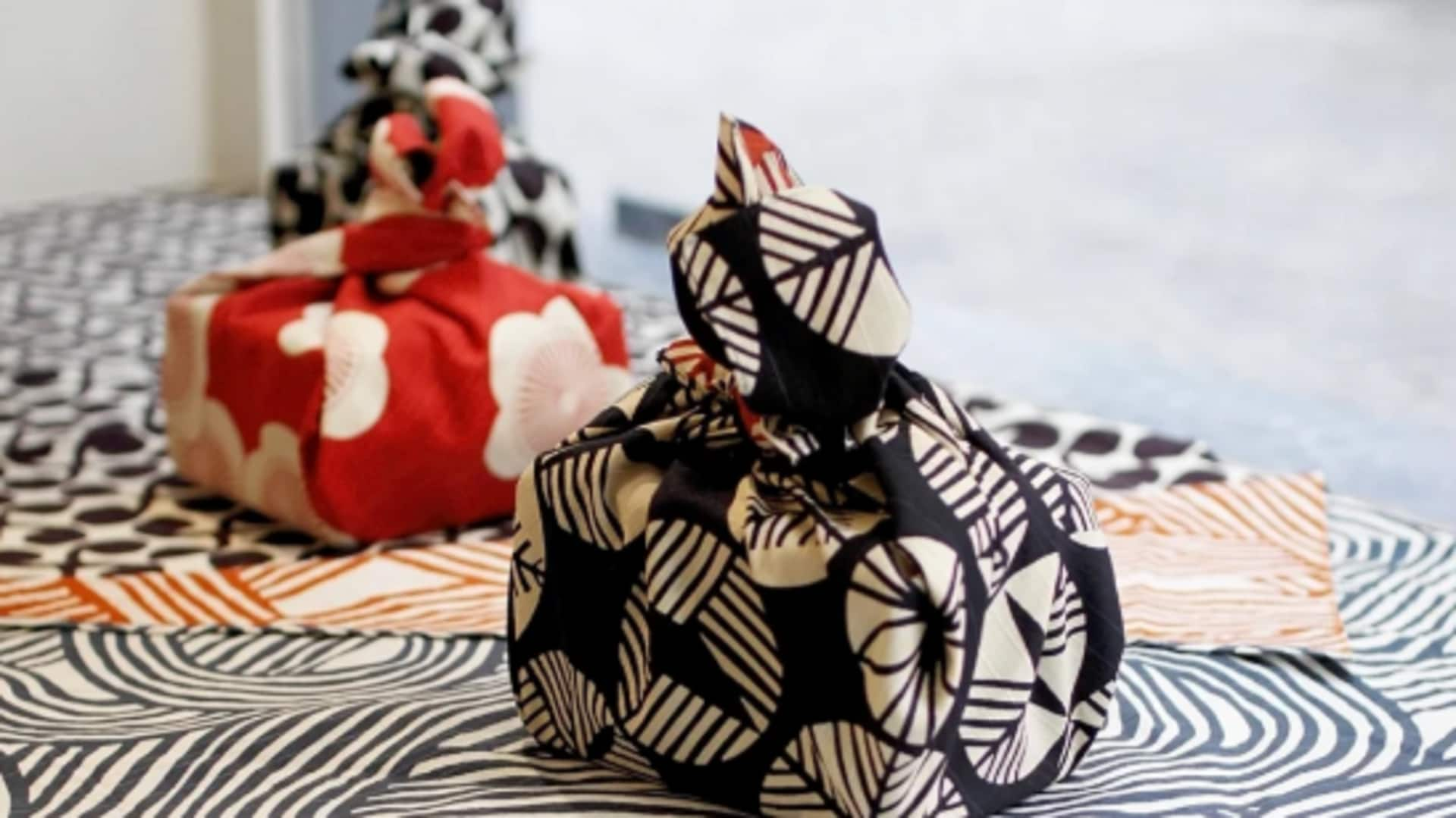
5 compelling facts about Japanese furoshiki artistry
What's the story
For those unaware, furoshiki is the ancient Japanese art of wrapping things in cloth. It has been practiced for centuries and is as practical as it is beautiful. Furoshiki is more than merely wrapping things; it is a philosophy of sustainability, creativity, and respect for what we have. The art has recently gained popularity as people look for sustainable alternatives to paper/plastic packaging.
#1
Origin of furoshiki
The history of furoshiki dates back to Japan's Nara period, more than 1,200 years ago. It was first used to cover precious items, but over time, the technique developed into a convenient way of carrying one's belongings during the Edo period. The term furoshiki literally means "bath spread," as they were employed in public bathhouses where people wrapped their clothes while bathing.
#2
Versatility of use
Besides wrapping gifts, furoshiki is super useful and can serve a variety of purposes. You can easily use it as a bag by tying knots at strategic points or as an impromptu tablecloth or scarf. This versatility makes furoshiki an appealing choice for anyone willing to ditch waste and welcome multifunctional things in their lives.
#3
Eco-friendly benefits
One of the most compelling aspects of furoshiki is its environment-friendly nature. Unlike single-use paper or plastic wraps, furoshiki cloths are reusable and durable. They contribute greatly to cutting down the amount of waste produced by offering an alternative that can be used over and over again over the years. This is in keeping with the increasingly global trends of sustainability and reducing carbon footprints.
#4
Artistic expression through patterns
Furoshiki also provides endless possibilities for artistic expression with its diverse patterns and designs. Traditional motifs often include elements from nature such as flowers or animals, while modern designs may incorporate abstract patterns or contemporary themes. Each piece tells a story through its colors and imagery, making it not only functional but also visually appealing.
Tip 5
Cultural significance today
Today, furoshiki is not only important as an art but also as a piece of Japanese heritage. It encourages mindful consumption instead of disposable habits, which is unsurprising given its centuries-old roots in Japan. The custom continues to remain relevant, courtesy the increasing environmental awareness the world over.